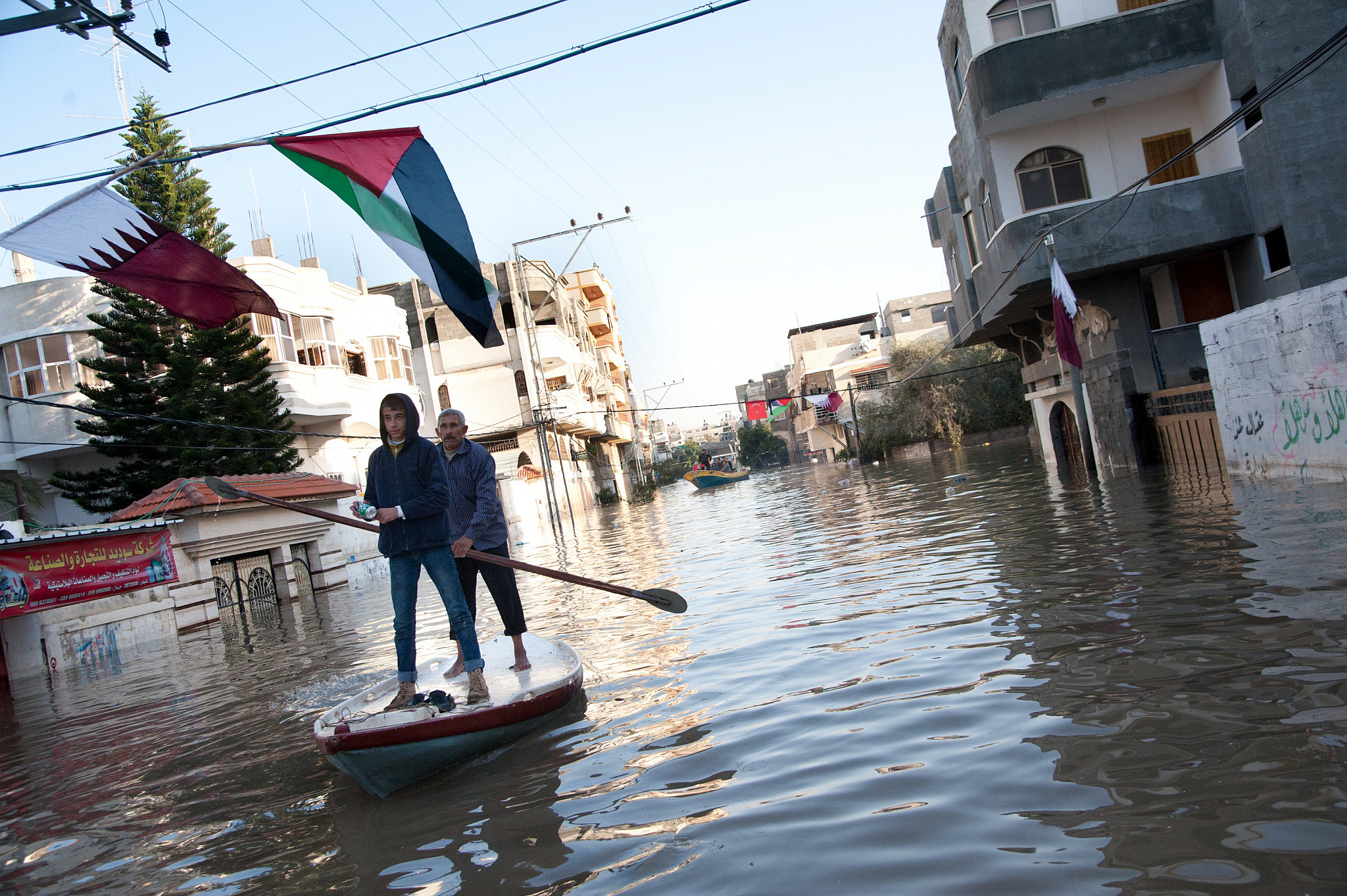Ever-worsening shortages of water and electricity. Catastrophic flooding in dense urban areas. Food insecurity exacerbated by drastic temperature increases, reduction in overall rainfall, and the long-term impact of toxic chemicals.
This is the bleak near-future that awaits the Gaza Strip, a climate change hotspot within a hotspot that is being denied both its basic humanitarian needs, and the capacity and resources to prepare for and minimize the impacts of climate breakdown. Yet tackling both these issues requires taking steps under nearly two decades of an unrelenting land, air, and sea blockade imposed by both Egypt and Israel — and repeated bombardments by the latter are also exacerbating environmental devastation in the strip, further undermining Gaza’s ability to prepare for the unfolding climate crisis.
Gaza’s two million residents are therefore effectively living in an open-air prison — one which is exposed to incessant rounds of aggression and destruction, as well as Israel’s uncompromising restrictions over the movement of people and materials. In this fragile reality, the most basic life-supporting infrastructure, such as access to clean water and continuous electricity, are under continual threat. And those are the very resources and supplies that are most susceptible to climate breakdowns — leaving Gaza and its residents in a race against time to make the strip livable not only in the present, but also in an uncertain, and increasingly volatile, future.
A dual crisis
At its core, climate resilience is about strengthening the capacity for people to meet these basic needs amid a changing climate. But reinforcing water and electricity supply is essentially impossible under the conditions that Israel and Egypt have imposed on Gaza.
Gaza’s inability to build climate resilience is “part of a systematic mechanism of oppression aimed at deepening Israeli domination over Gaza,” Alexia Guilaume, a legal researcher at Al-Haq, one of the six Palestinian rights groups Israel outlawed in October, told +972.
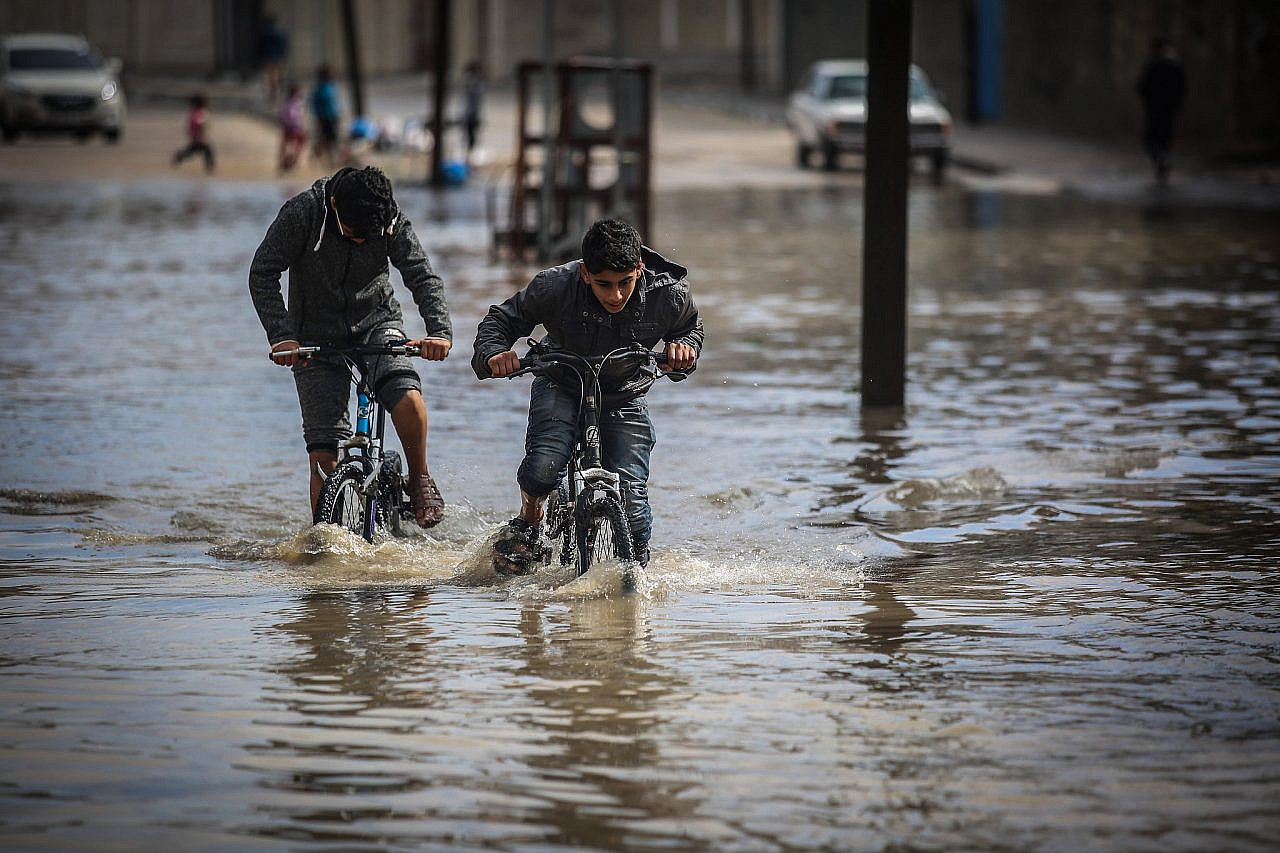
While Gaza also shares a border with Egypt, which maintains control over the movement of people and goods through its two crossings, Guilaume said the most powerful actor in the area is Israel. “Systematically speaking, Israel’s blockade is what deprives Palestinians from sustainably managing their natural resources and building climate resilience,” she added.
Israel’s policies vis-à-vis the Gaza Strip are aimed at “entrenching vulnerabilities in order to make it unlivable and unadaptable,” Guilaume continued, calling them“just another tool to uphold apartheid.”
The combined effects of siege and global warming on Gaza’s adaptability and livability are clear in the grave shortage of access to clean water in the strip. Higher temperatures and variable rainfall threaten water supply and quality around the world, and particularly in the Middle East, where temperatures have risen by 1.5 degrees Celsius (2.7 degrees F) since the Industrial Revolution, well above global trends of 1.1 degrees Celsius. Temperatures are expected to increase by more than 4 degrees Celsius by the end of the century — accompanied by a decrease in annual rainfall, with estimates ranging from 30-60 percent.
In Gaza, however, where access to clean water is already limited due to Israel’s blockade, people are even more vulnerable to climate change-induced water shortages. On average, a person in Gaza receives about one fifth of the amount of safe drinking water recommended by the World Health Organization (just 21 liters per day, against the 100 liter recommendation). This is less than 10 percent of the average 280 liters that Israeli citizens receive per day. Only 3 percent of the strip’s sole natural water source, the groundwater basin known as the Coastal Aquifer, is safe to drink. The basin has been polluted by both seawater intrusion, as a result of over-extraction, and wastewater, which has historically flowed openly in Gaza’s wadis due to a lack of treatment plants.
“We know that the sustainability of our only natural water source requires that we try to rehabilitate and clean the aquifer through replenishing it with rainwater,” said Monther Shoblaq, head of Gaza’s largest water utility, the Coastal Municipality Water Utility. “This requires big, open land areas, which we do not have much access to in Gaza. But it also requires finding ways to collect rainwater, and the rainfall frequency is changing,” he added.
A regular rainy season starting in October has given way to unpredictable “showers [and] storms” that are far harder to plan around, and thus collect rainwater from, explained Shoblaq. And in light of Gaza’s intensive urbanization and poor stormwater infrastructure, the projected short periods of heavy rain will likely cause severe flash floods in densely populated areas.
Moreover, as global warming melts ice sheets and glaciers, sea levels are rising. In Gaza, this will likely intensify the ongoing intrusion of saltwater into the Coastal Aquifer. Furthermore, low-lying agricultural land along the coast — which accounts for 31 percent of the strip’s total agricultural production — will be at risk of flooding, further impacting food security.
Energy resource access in Gaza has similarly been shaky for decades. Due to both Egypt and Israel’s long-standing control over Gaza’s energy provision, amplified by governance disputes between Hamas and the Palestinian Authority, the electricity supply to Gaza suffers from chronic instability and meets less than 50 percent of demand.
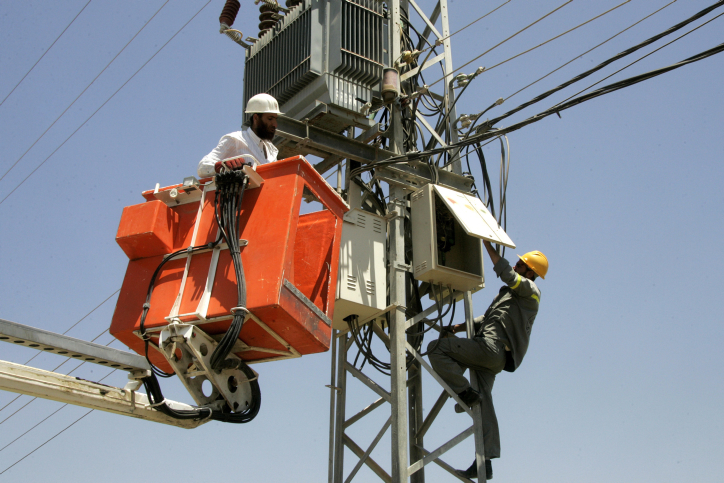
Electricity to Gaza comes from three sources: a single power plant in the strip, which currently operates on diesel (and which, according to Hussein al-Nabih, the Director General of the Palestinian Energy and Natural Resources Authority, is only operating at 70-75 percent capacity due to maintenance of one of the fuel turbines, fuel shortages and low levels of user bill collection); Egypt, which used to account for 15 percent of Gaza’s electricity supply, but whose lines have been down since April 2017 due to technical malfunctions; and Israel, which is currently only supplying 60 percent of its supply capacity. In this reality, residents of the strip report receiving an average of four to six hours of electricity a day, often with blackout periods lasting over 12 hours (published data on electricity availability varies, ranging from 5-15 hours per day).
“We are drowned in humidity, and my respirator, which I struggled for years to get, just turns off when there is no electricity,” said Saeed, a lung cancer patient living in Gaza. Saeed has been refused treatment in the West Bank and relies on Gaza’s under-resourced medical system. He asked not to disclose his last name, out of fear that doing so might lead Israeli authorities to deny him an exit permit again.
“My breathing problems have increased, and food spoils with no refrigerator operating in the house,” continued Saeed. “Our phones are out of battery all the time, and so are our lives.”
This chronic shortage of electricity, which has lasted over a decade, severely affects the availability of essential services, including health, water, and sanitation. As such, it also undermines Gaza’s fragile economy, especially industry and agriculture.
Building climate resilience under siege
As energy, water, and food security in Gaza continue to crumble, Israeli restrictions on material entry are also restricting the strip’s ability to respond to the humanitarian crisis or help prepare, mitigate, or adapt to climate change. For years, Israel has severely restricted the entry of materials into Gaza that it defines as “dual-use,” which it perceives as usable for both civilian and military purposes, said Miriam Marmur, international media coordinator at Gisha, an Israeli human rights organization working to protect the freedom of movement of Palestinians in Gaza.
Access to core materials for construction and the maintenance of infrastructure is under the control of the Israeli military. The army imposes, at will, bureaucratic measures that often delay the import of materials into the strip, and can decide at any moment to halt the entry of materials entirely. This slows projects, sends contractors into debt, drains donors’ capacity and interest in supporting the sectors, and ultimately limits the ability of water, energy, and food security projects to produce and deliver safe water, electricity and food.
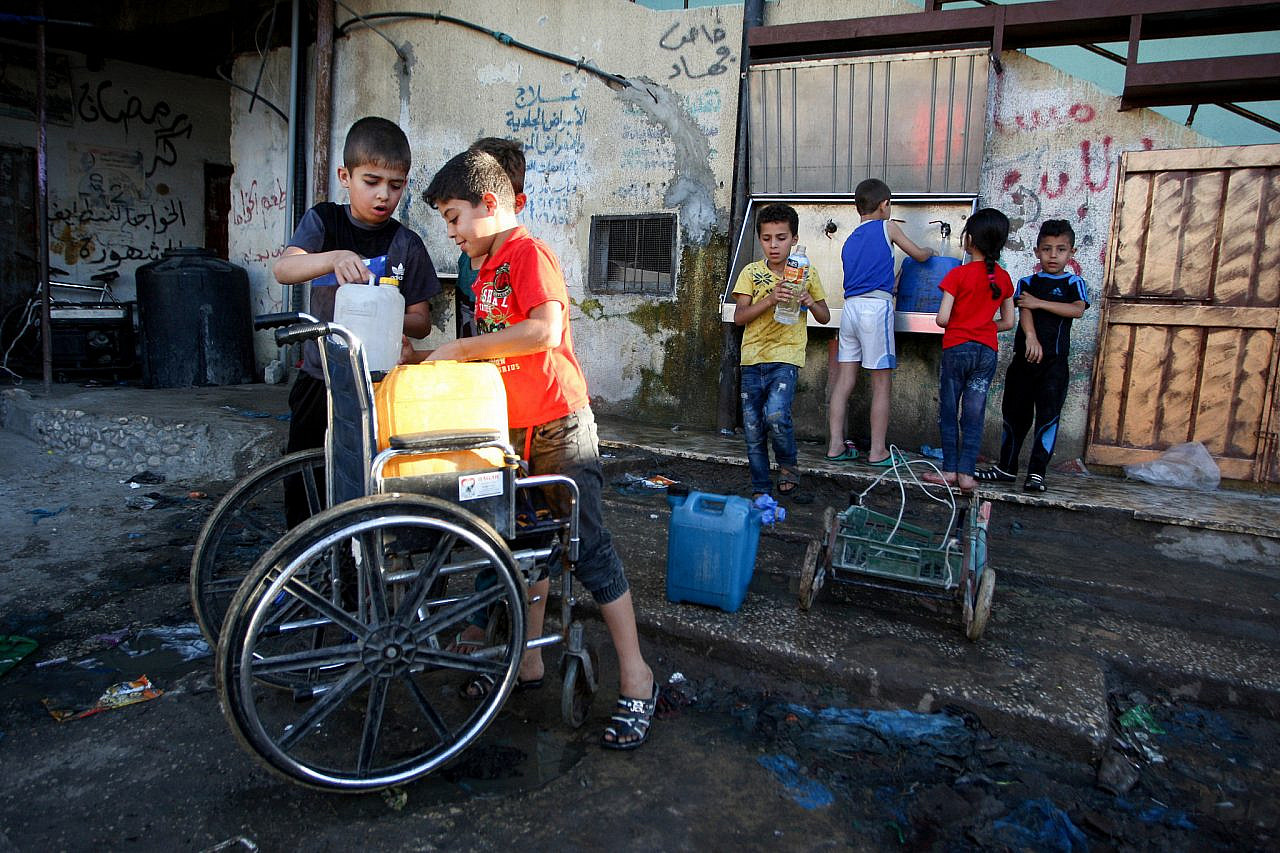
For the water sector, importing critical materials such as pipelines and cement has been largely restricted by the Israeli Civil Administration, the bureaucratic arm of the occupation that sits within the Defense Ministry. As a result, water and wastewater infrastructure projects, while planned and often funded to meet the urgent humanitarian crisis, are delayed for years before completion. Without a reliable and safe drinking water supply, Gazans rely on expensive, private water suppliers (which is also unregulated by the water authority and therefore often unsafe to drink) to meet their drinking water requirements.
Ali Alasmer is a 55-year-old vegetable farmer whose 12 family members fully depend on his income due to unemployment as well as chronic health issues in the family. Ali has not been able to farm since his land was targeted in Israeli airstrikes — the first of which was in 2008, and again in 2012. He asked not to publish his real last name for fear of retribution from Israel.
Ali has since been unable to import materials critical for rehabilitating his agricultural land (such as water pipes, pumps and filters for irrigation networks, seeds and seedlings, fertilizer, chemical materials, plant antibiotics and nets for greenhouses) and has therefore defaulted on his municipal water bills. Like many in Gaza, he maintains a longstanding debt with the water utility, and still needs to supplement the municipal supply with purified water from private vendors. Residents of Gaza, including those who spoke to +972, report spending between 40 to 90 NIS (13 to 29 USD) per month on safe drinking water.
For Ali, the 70 NIS (23 USD) he spends on water is approximately 20 percent of his monthly income. “We cannot even collect rainwater, because we do not have a tank that is suitable from a health aspect,” he said. “Our everyday life is disturbed and unstable because of food, water and health insecurity.”
‘Full of poison’
Even when water supply infrastructure is built, it faces the risk of destruction. According to the Palestinian Water Authority, the latest round of aggression in Gaza this May left residents with 40 percent less water due to direct and indirect targeting of water infrastructure. Efforts to rebuild or rehabilitate water infrastructure, among other sectors, were also barred by extreme material entry restrictions, which lasted many months into the summer.
The energy sector is also not immune from the impact of periods of escalation. Last May, during the bombardment, Israeli authorities completely banned imports of fuel to supply Gaza’s power plant, closing the crossings after a soldier was lightly wounded by a mortar shell fired from the strip.
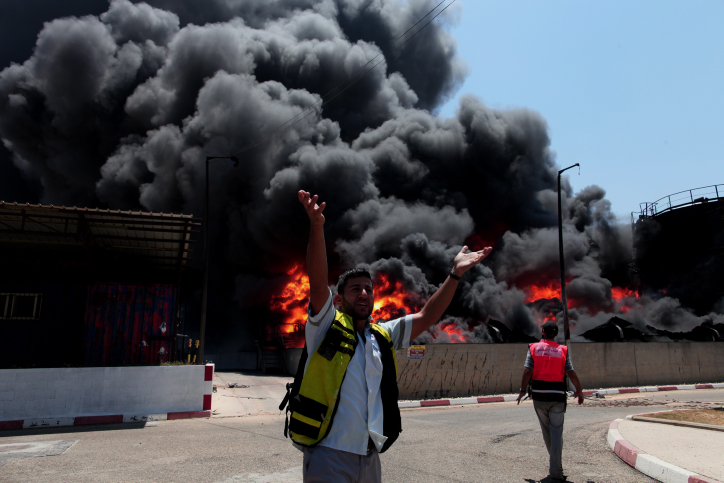
This “total fuel ban,” in the words of Gisha’s Marmur, severely limited the already-faltering electricity supply and, during a period of mass injury and death caused by the bombing, “jeopardized the functioning of hospitals and other civilian infrastructure, such as water supply and sewage treatment.”
Hani Abu Rass is an electricity technician who works at Gaza’s power plant and used to be on a team that would repair electrical lines during Israeli aggressions. He says that “we were targeted several times while wearing vests that show we are electrical technicians. The first time Israel targeted one of our vehicles, two of my staff were severely injured. The second time Israel attacked the staff with shells so that we could not even reach the lines that needed repairing. It is a miracle that I am still alive.”
Due to these power cuts, drastic reductions had to be made in safe drinking water production from desalination facilities: they could only operate for a few hours per day, while one facility serving 250,000 residents shut down entirely. Operations only resumed according to the electricity grid cycle (about eight hours per day) after the ceasefire.
The agriculture sector has also been attacked. Israel dropped phosphorus bombs on the land of Ali and his family, and fired on their water wells. “We first felt a rocket and were suffocated by a smell,” Ali recalled. “Then we saw the bombs falling on our land. Once the violence settled, I brought my friend, an agricultural engineer, to check our lands, and he said it was full of poison. We later learned from the Health Ministry in Gaza that Israel was using phosphorus bombs.”
Israel has been accused of using these bombs in an unlawful manner, particularly during its 2008/9 assault, due to its indiscriminate firing over densely populated civilian areas. Besides having a detrimental impact on human health and bodily safety, these chemical bombs can contaminate land and are toxic to plants, fruits, and vegetables.
“We could not plant any kind of vegetable in the places that were destroyed by the phosphorus bomb,” Ali said. “Since these bombs were used on our land, all of the surrounding trees produce crops with different colors and tastes than those that we were able to grow before. Israel uses these weapons to target us and sterilize our land. They poison our fruit and vegetables, even after washing them, creating food insecurity due to the decline in production.”
The chemicals used in Israeli weapons like phosphorus further jeopardize the health of people in Gaza. Dr. Tamer Yousef, a neurologist based in one of Gaza’s major hospitals, explained that because “trees and plants can absorb these poisonous chemicals, their agricultural production is not healthy.”
According to Human Rights Watch, even a medical report by the Israeli Health Ministry concluded that white phosphorus is dangerous, noting it “can cause serious injury and death when it comes into contact with the skin, is inhaled or is swallowed,” leading to further damages to internal organs if absorbed.
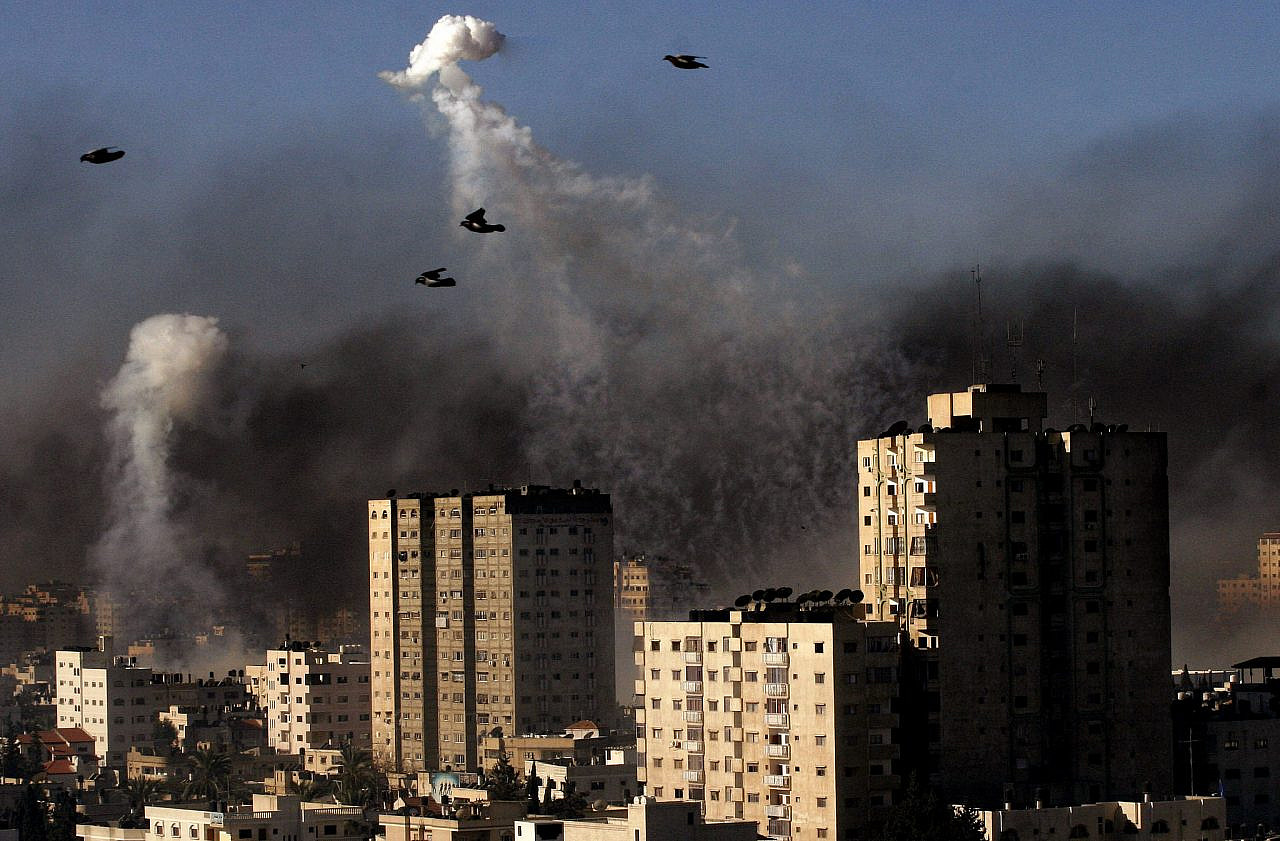
While research is lacking on the long-term impacts of white phosphorus in Gaza, soil samples following Israeli military aggressions indicate that a cocktail of heavy metals were introduced into Gaza’s environment, which can impact agricultural productivity as well as environmental and human health in the long-term.
In addition, a joint investigation by Gisha, Adalah, and Al-Mezan indicated that Israel has, on dozens of occasions, conducted aerial spraying of herbicides at dangerously high concentrations across 12 square kilometers of land in Gaza, including of ‘Roundup,’ a Monsanto-owned chemical compound of Glyphosate. While the International Agency for Research on Cancer marked this compound as probably carcinogenic and agronomists and environmental experts have raised concerns about their effects, this herbicide continues to be used globally.
Beyond the periodic military assaults, Israel has also bulldozed productive crop areas across Gaza over the past few decades, and has placed severe restrictions on developing agricultural land in the “buffer zone,” a 984-foot wide area along the fenced perimeter that separates Gaza from Israel, which Israeli authorities have maintained restricted access to Gazans.
“Israel has been systematically targeting our agricultural land as if it wants to paralyze our living conditions,” said Ali. He noted that over the years, Israel has bulldozed countless crops such as olive, fig, and citrus trees.
The devastation of Gazan land further robs many Palestinian agricultural workers of their livelihood. Ali says that the land is the main source of income for most of the families he knows. “There is no other job option for farmers in Gaza because of the economic stagnation caused by the Israeli siege,” he said. “I am an old man. My sons are university graduates but have no jobs. I was planning to have them work in our agricultural land, but alas, everything is gone.”
The tightening space for agricultural development — both from Israeli bombing campaigns and land development restrictions, not only impact livelihoods and strain agricultural development, but also accelerates soil degradation and desertification, deepening Gaza’s vulnerability to the climate breakdown.
Between humanitarian and climate crises
Ali’s story is representative of the unrelenting economic crisis created by Israel’s occupation of Gaza, with more than half of Gazan Palestinians living below the poverty line. In this reality, where, for example, water and electricity bills are going unpaid across the strip, water and energy authorities are unable to cover their basic costs, maintain their existing infrastructure, and meet the population’s basic needs — let alone make it climate resilient.
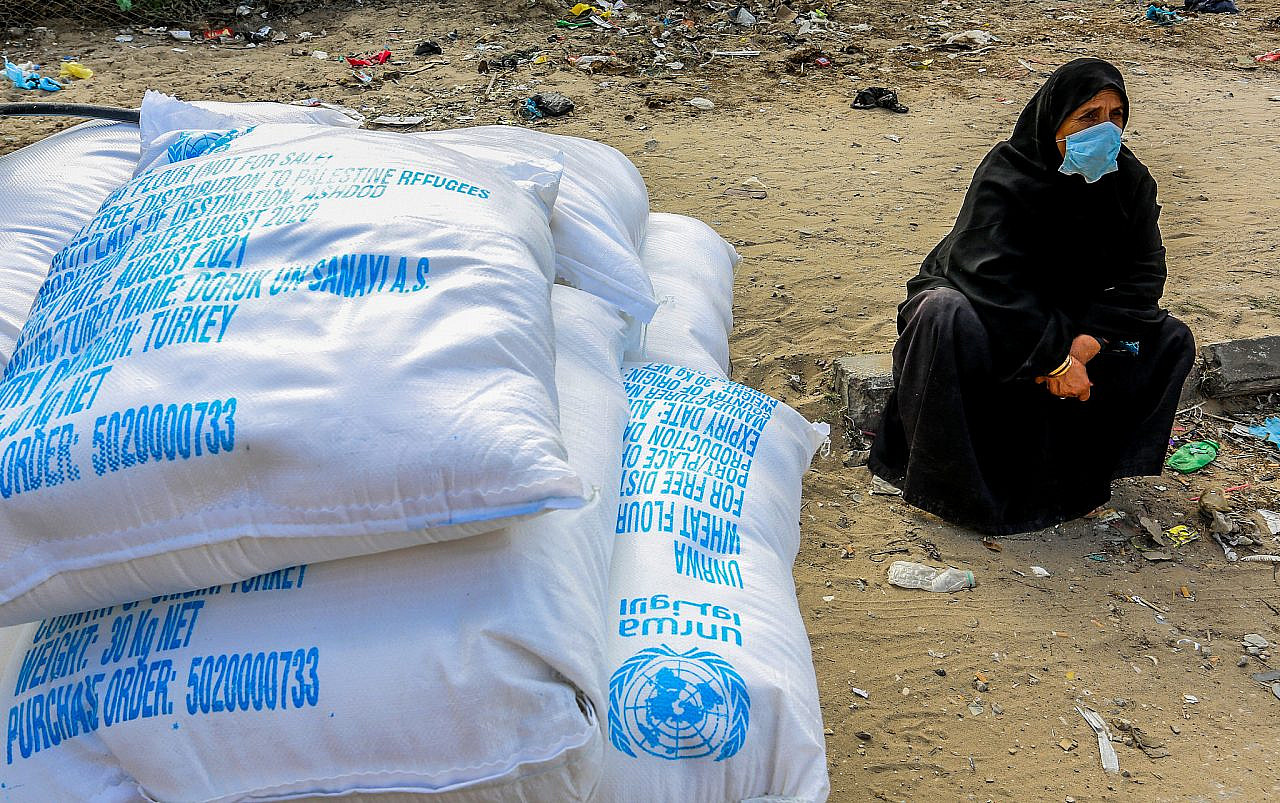
There is an elephant in the room regarding the need to both significantly increase energy and water supply in Gaza, and to make them climate resilient: the global struggle against the climate crisis calls for an urgent reduction in greenhouse gas emissions, and the UN’s Intergovernmental Panel on Climate Change has recommended halving CO2 emissions by 2030 and transitioning to a net-zero carbon economy by 2050.
However, the combination of a severe electricity shortage and the urgent need to address the humanitarian crisis mean that the West Bank and Gaza still require tremendous and rapid development that may not align with the spirit of the climate struggle.
Illustrative of this is the Gas4Gaza project, which aims to significantly increase domestic energy production, lower costs to residents, and reduce Gaza’s dependence on electricity and fuel imports from Egypt and Israel.
Al-Nabih from the Palestinian Energy and Natural Resources Authority sees this project as central to Gaza’s energy crisis — it will not only bridge the electricity deficit, he said, but will also “support [Gaza’s] economic development…and will significantly reduce greenhouse gas emissions.”
While this project is designed to mark a shift in the Palestinian energy economy and emissions make-up, the development of natural gas, potent in methane, has enormous impacts on the climate due to greenhouse gas emissions that can come from leakages in production and transportation (a standard occurrence that carries the added concerns of infrastructure and pipeline damage from Israeli bombing campaigns in Gaza).
There is therefore a deep tension between prioritizing Gaza’s economic and humanitarian recovery, which would reinforce its energy reliance on fossil fuels, versus the need to combat the climate crisis, which would require an urgent transition to renewable energy.
It is likely that due to the fragility and gravity of its situation, Gaza will not undergo the same process of fossil fuel withdrawal as other parts of the world. Such a shift would require extensive measures such as improving energy efficiency, reducing the use of coal and fuel, and generating renewable energy such as solar power — baseline conditions that Gaza has nowhere near the resources or capacity to meet.
This difficult reality aligns with a growing acknowledgement within the climate justice movement that although we are all indeed affected by the climate crisis, not all of us are “in the same boat.” Populations that suffer from systemic discrimination, racism, and violence, as well as those that live under occupation, have greater difficulty in building climate resilience and will therefore suffer far more from the climate crisis than other populations. As Gaza is striving to secure even its most basic humanitarian and human rights needs, the idea of gearing toward a low-carbon economy and reduction in greenhouse gas emissions is inevitably taking a back seat; instead of proactive climate resilience, then, the focus becomes about reactive adaptation and rehabilitation following climate breakdown.
Guilaume at Al-Haq fears that Palestinian institutions are far too fragmented to pursue any meaningful coordination in climate adaptation, with Hamas in Gaza, the Palestinian Authority in the West Bank, and Israel’s overall rule between the river and the sea. Such divided governance, she warned, “will hinder the creation of any effective roadmap toward mitigating the effects of climate change.”
Moreover, Guilaume stressed, Israel’s control over natural resources in Gaza will further exacerbate the strip’s climate vulnerability — and this state of affairs will only deepen, she added, with Israel all but certain to further exert control over Gaza’s resources “in order to adapt to the climate crisis.”
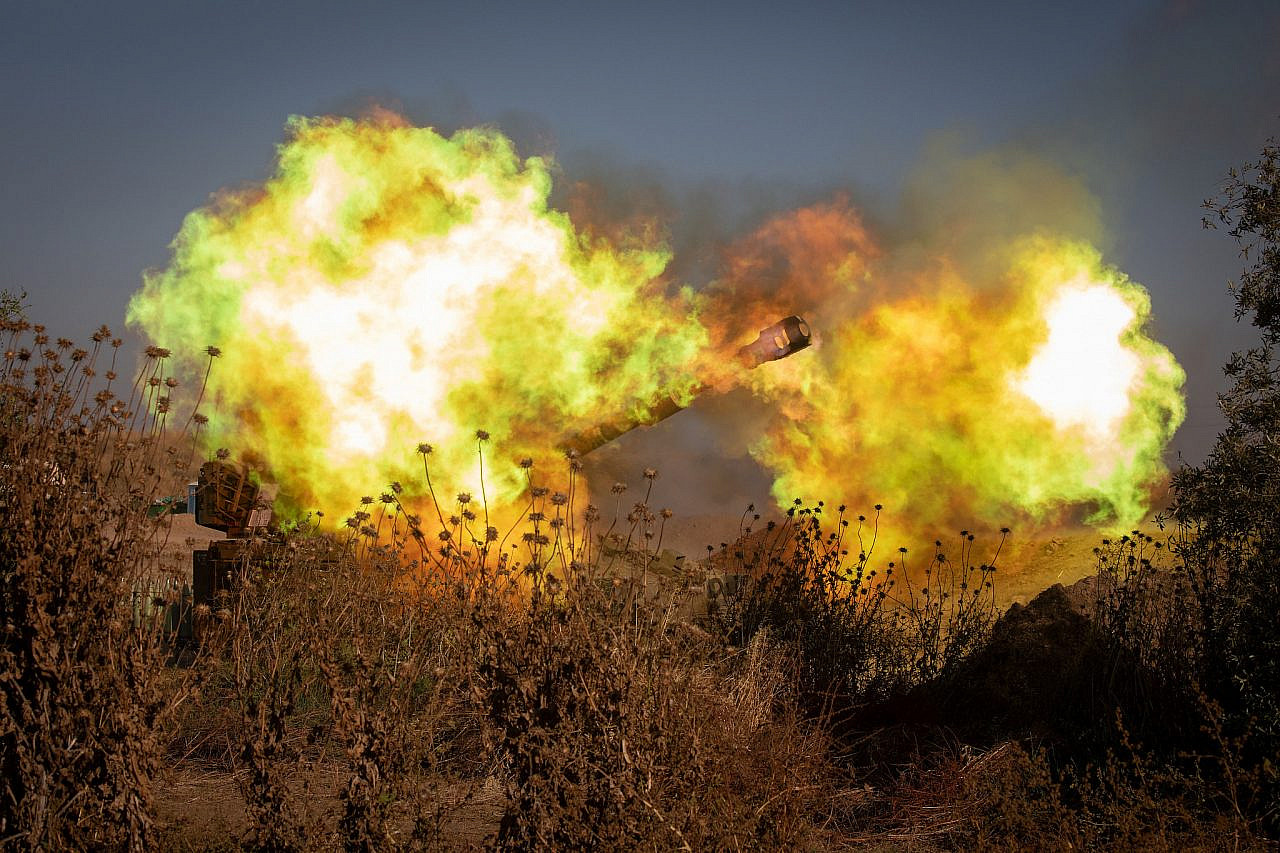
‘Fighting colonialism goes hand-in-hand with the fight for climate resilience’
Despite these immense obstacles, authorities and institutions in Gaza are doing whatever they can to build climate preparedness and resilience. Shoblaq, of Gaza’s Coastal Municipality Water Utility, said that the water sector is continuing to make progress on integrating renewable energy into their systems. “We’re lucky that when there’s a big storm, the sun comes out afterwards,” Shoblaq said. “Most of our water and wastewater facilities are currently or will shortly be running on as much renewable energy as possible.”
Wastewater treatment in Gaza has also significantly improved in recent years, according to Shoblaq. “Where once wastewater would flow through Wadi Gaza and into the sea, we have advanced wastewater treatment infrastructure to improve the conditions of our environment, and we are rehabilitating the wadis where this wastewater once flowed,” he said. “While these infrastructure projects were delayed for years due to material entry restrictions, we hope that Wadi Gaza can be a symbol of hope.”
Yet for Palestinians in Gaza, such piecemeal interventions fall short of the systemic overhaul needed to rehabilitate and protect their environment.
“Years have gone by and our reality has not improved,” said Ali. “Israel has only tightened discriminatory policies against Gaza. The international community must start by putting pressure on Israel to break the siege, so that we can have the equal ability to respond to climate change as anyone else would.”
Yet discussion of the interplay between the political, economic, humanitarian, and climate disasters in Gaza is not breaking through into the global climate debate. The recent UN Climate Change Conference (COP26) in Glasgow provides a stark illustration of this dynamic: although it underlined the world’s current focus on the climate crisis, not a single resident of Gaza was able to attend the event. (The Palestinian civil society delegation was, furthermore, denied visas to attend, although two members were able to present via a video link.)
For the strip’s residents, this absence of Palestinian voices from Gaza highlighted the reality that change will not come from elite decision-makers at COP26 alone, but through embracing an intersectional approach within the movement for climate justice.
“We know that climate change affects people all over the world, including Gaza,” said Ali. “So the solution to the global climate crisis has to take Palestine into consideration. I am afraid that if the world continues to ignore Gaza’s suffering, this would threaten not only local but also international climate resilience.”
Saleem Jaber, a human rights activist who was wounded in the 2008 Israeli assault on Gaza, echoed this sentiment. “Fighting Israeli colonialism goes hand in hand with the fight for climate resilience,” he said. “Both struggles resist different kinds of injustices that, at the end of the day, are a matter of protecting human beings. But these struggles are also connected — and we cannot support one struggle without understanding that we must support all efforts for advancing justice.”

